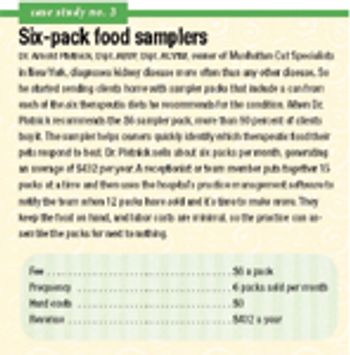
Your colleagues use these programs to improve care and raise revenue. Would a similar approach work for you?

Your colleagues use these programs to improve care and raise revenue. Would a similar approach work for you?
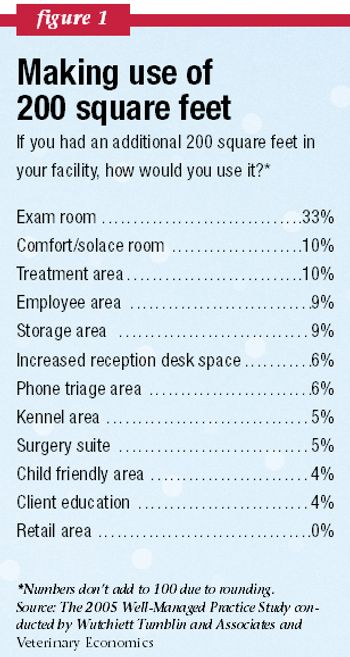
Are you making the most of your practice space? Find out by breaking down your earnings by square foot and comparing your numbers with these averages for each profit center.

A good negotiator earns up to $31,000 more a year. But pay heed; bad negotiations can cost you big. Are you letting too much money trot off?
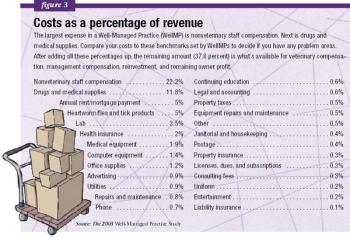
Health insurance and drugs and medical supplies munch down the most cash. But they aren't the only expenses nibbling at your funds.
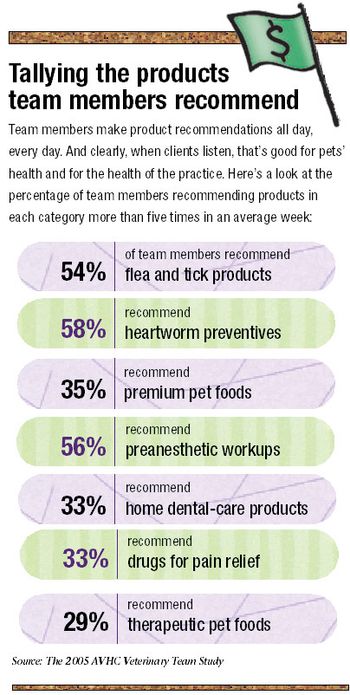
Use these strategies to harness your team members' power to drive client compliance and revenue—and improve your patients' health.
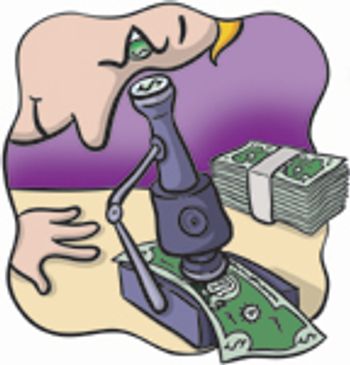
Choosing to ignore monthly financial reports could cost you as much as $42,000 per year. Are you willing to give that money away?

My partner and I recently learned that we're paying associates more than other practitioners in our area do. How should we get our compensation more in line with prevailing wages-with a salary freeze or a pay cut?

According to Gallup's annual Personal Finance poll, American's top financial worry is retirement.
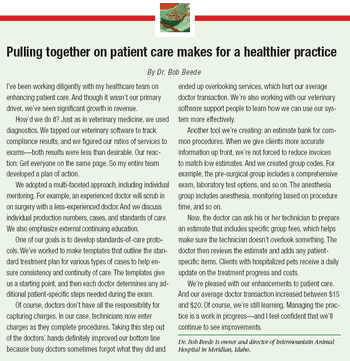
Find out-and crack down on missed charges using these strategies. Remember: Focused attention on this issue brings prosperity and job satisfaction to your future.

Even small businesses create hundreds of transactions during a month. And when you add your personal banking to the mix, it's easy to become overwhelmed, especially if you don't like bookkeeping.
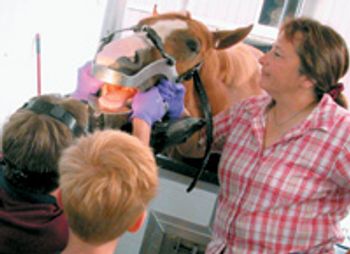
Does every horse that you see undergo a dental exam? Is a complete oral exam including the use of sedation, a full-mouth speculum, a good headlight and a dental mirror part of your yearly preventative maintenance program? Do you include a complete oral exam as a part of all your pre-purchase exams? If you answered "Yes" to these questions, then you are, unfortunately, in the minority of equine practitioners today.

High overtime costs prompted Gerard Gervasi, hospital administrator at Collierville Animal Clinic in Collierville, Tenn., and the practice owners to look into the financial impact of being open on Saturdays--and find a new solution.

Low costs aren't the only reason to choose a lender. Also consider these important details before saying yes.

These doctors learned the hard way what they should have done during the construction of their hospitals. Now that they're enjoying their award-winning facilities, they're ready to share their stories—and help you avoid the same problems.

Don't waste your energy trying to squeeze a 15,000-square-foot hospital onto a 3,000-square-foot lot. Instead, exercise flexible thinking, creative planning, and strategic cost controls to build your dream.

My office manager wants to join a professional association and asked if I'd pay the annual dues. Should I? Should I do the same for other employees? Are the dues deductible?

I own a small practice, and 2 percent to 4 percent of the gross won't support a manager. So how can I get the necessary help for such issues as personnel, financial, and facilities management?
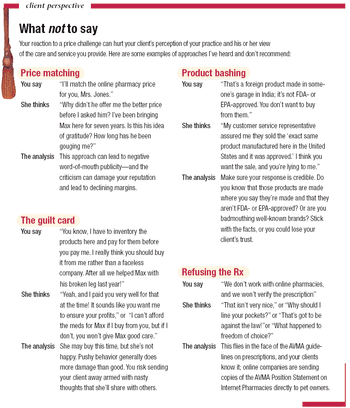
It was my job to sell pet owners on 1-800-PetMeds. But, the truth is, you're holding the best cards in this game. Just spotlight your strengths: service and value.
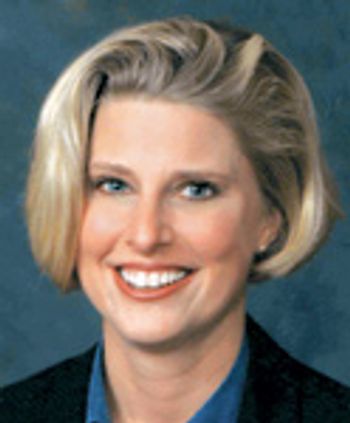
When a prospective client calls to ask how much I charge for a standard visit, my receptionist explains that my fees vary depending on the nature of the visit. I suspect this answer is driving away clients who are comparing fees as they search for a new veterinarian. Should my receptionist be more specific?

I will be receiving a retirement plan distribution when I change jobs. I intend to roll it over to my new employer's plan and have been told that such a rollover will avoid a 20 percent withholding tax.
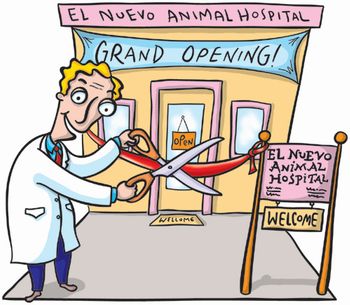
Show off your new building or renovation by hosting an open house.

There's more to a good site than the right location. Here's a look at the other factors you need to consider.
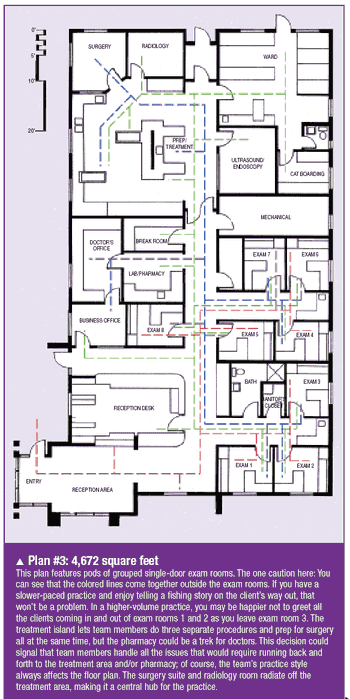
Learn from these examples and avoid traffic snarls in your new practice.
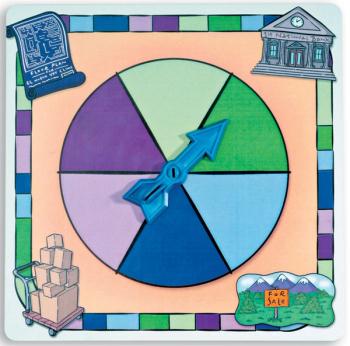
Learn how to build a winning hospital from start to finish with this advice from Veterinary Economics Editorial Advisory Board members and Hospital Design Competition winners.
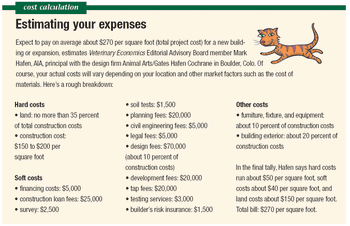
Your banker wants to know whether you're a good risk-and you want to know you're getting a reasonable deal. Use these tips to balance the equation.

I read in a past issue about an equine practitioner who requires payment when services are rendered. I'd love to do that, but my clients expect me to bill them. How can I change my system this late in the game?

The day you become an owner is the day you should start planning to sell. Here's why-and a look at what to consider.
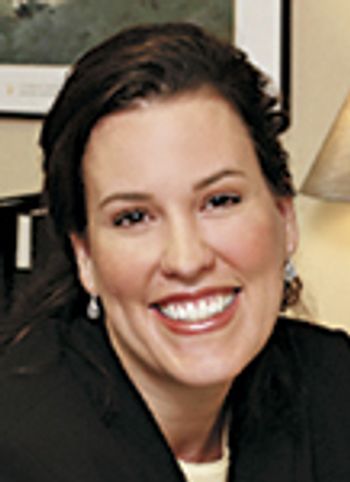
I own a feline-exclusive practice. Our prices are comparable to others in the area, except for our physical exam, which is $6 to $14 lower than most of my colleagues'. I've been thinking of raising it by $6 or $8, but several members of my team think our lower-priced office visit gets clients in the door. Once they're here, they rarely decline any additional recommended services. My team feels that without the enticing exam price, potential clients might be tempted to go elsewhere. What should I do?

Is it possible for a start-up to be profitable from the beginning? If so, how?
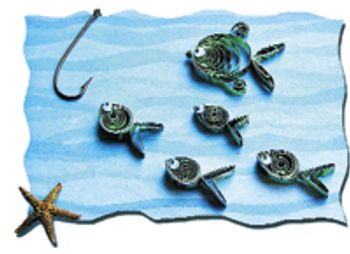
Suddenly, in the midst of attempts to grow your practice, you find your cash flow dried up. And let's say your bank, no matter what you do, can't help you. What else can you do?